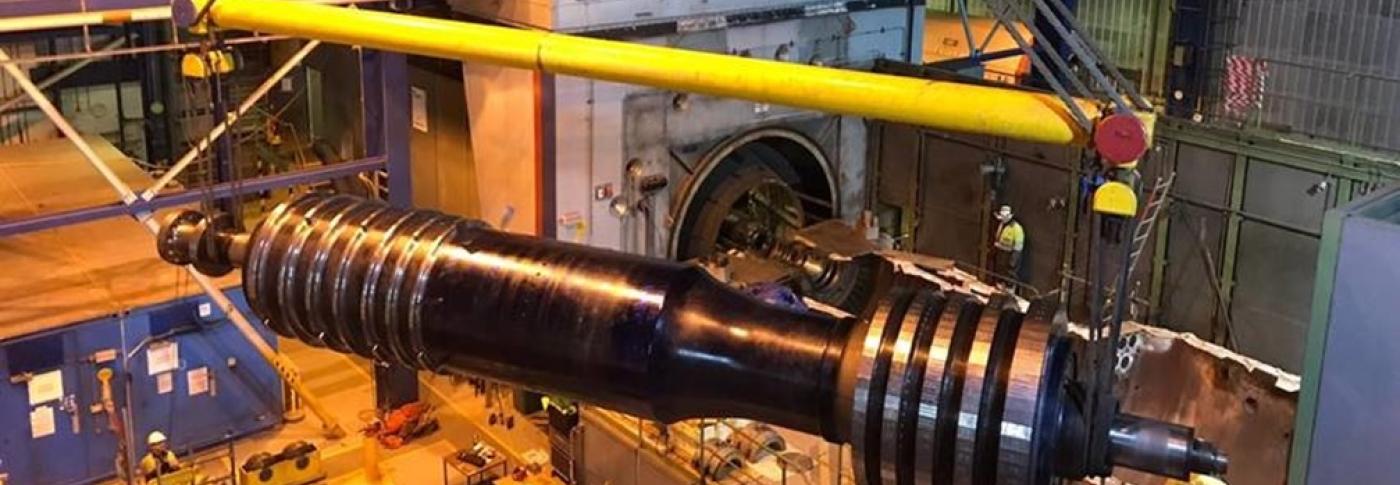The critical role of innovation in delivering a net zero…
27 Mar 2024 - 2 minute read

23 Jun 2021 - 4 minute read
Triton Power’s Deeside Power Station, a combined Combined Cycle Gas Turbine (CCGT) power plant in Flintshire, has begun supplying critical system support services to keep Britain’s power system secure.
The new six-year partnership with National Grid Electricity System Operator (ESO), which is responsible for balancing supply and demand for electricity in Great Britain, is part of a world-leading approach to managing the decarbonisation of the grid – securing electricity supplies, saving consumers money and helping to enable more zero carbon power such as wind and solar.
Deeside Power Station, which began providing stability services on Friday 18th June, originally consisted of two Alstom 13E2 gas turbines, two CMI Heat Recovery Steam Generators HRSG and an Alstom steam turbine, and has been shut down and in preservation since March 2018.
Under the terms of the stability contract, awarded in January 2020, the two gas turbines will provide the grid with support services including inertia and reactive power, which helps to keep the electricity system running at the right frequency to reduce the risk of power cuts. The steam generators and turbine will remain in preservation.
It will achieve this through using a small amount of power from the grid to spin the rotors and provide stability. This service was traditionally a by-product of the kinetic energy in the spinning parts of large traditional power stations. As the country’s electricity system has transitioned from traditional sources of power like coal to renewables, such as wind and solar, there has been an increased need to separately procure inertia to maintain stable, secure supplies of power.
How our new spin on grid stability is a boost for renewable generation
Through the stability tender the ESO has procured the equivalent amount of inertia as would have been provided by around five coal-fired power stations – and in the process will save consumers up to £128 million over six years.
Work to repurpose the gas turbines began in March 2020 with specialist new turbine blocks designed, manufactured and installed. Seven new colleagues have been recruited by Triton to manage the operations of the site through the contract, including a number of engineers who worked at Deeside when it was a gas plant.
Deeside is the latest a line of developments triggered by the ESO’s pathfinder contracts which are offering stability services to the grid. Welsh Power is installing a synchronous condenser and flywheel at its site at Rassau in Ebbw Vale. Statkraft is developing two “Greener Grid Parks” in Liverpool and Keith, Scotland, and Drax has begun providing inertia through its Cruachan hydroelectric pumped storage plant.
Mick Farr, Chief Executive Officer at Triton Power, said:
“The conversion of an aging traditional fossil fuelled power plant to provide grid stability services is what the energy transition is all about. It is so satisfying to see the same assets reused in a way that enables the transition and can be considered recycling in its purest form.
“Our team have worked tirelessly along with key engineering partners to make this innovative solution work in a way that provides the maximum value to the grid operator.
“I am sure we will see more of this approach as businesses react to the net zero targets but further clear policies with underpinning support mechanisms will be needed to deliver this goal across the sector.”
Julian Leslie, Head of Networks at National Grid ESO, said:
“Seeing Triton Power’s transformation of Deeside Power Station – from burning gas, to just providing stability services to the grid – is incredibly exciting.
“Innovations such as this, part of our new approach to system stability, are cheaper and greener than the alternative, reducing emissions and saving money for electricity consumers.
“Our stability pathfinder – creating a market for inertia and other stability services – is the first of its kind anywhere in the world and is a huge step forward in our ambition to be able to operate the GB electricity system carbon free by 2025.”